Clinical Mould Antigen Extracts and Moulds From Water-Damaged Homes
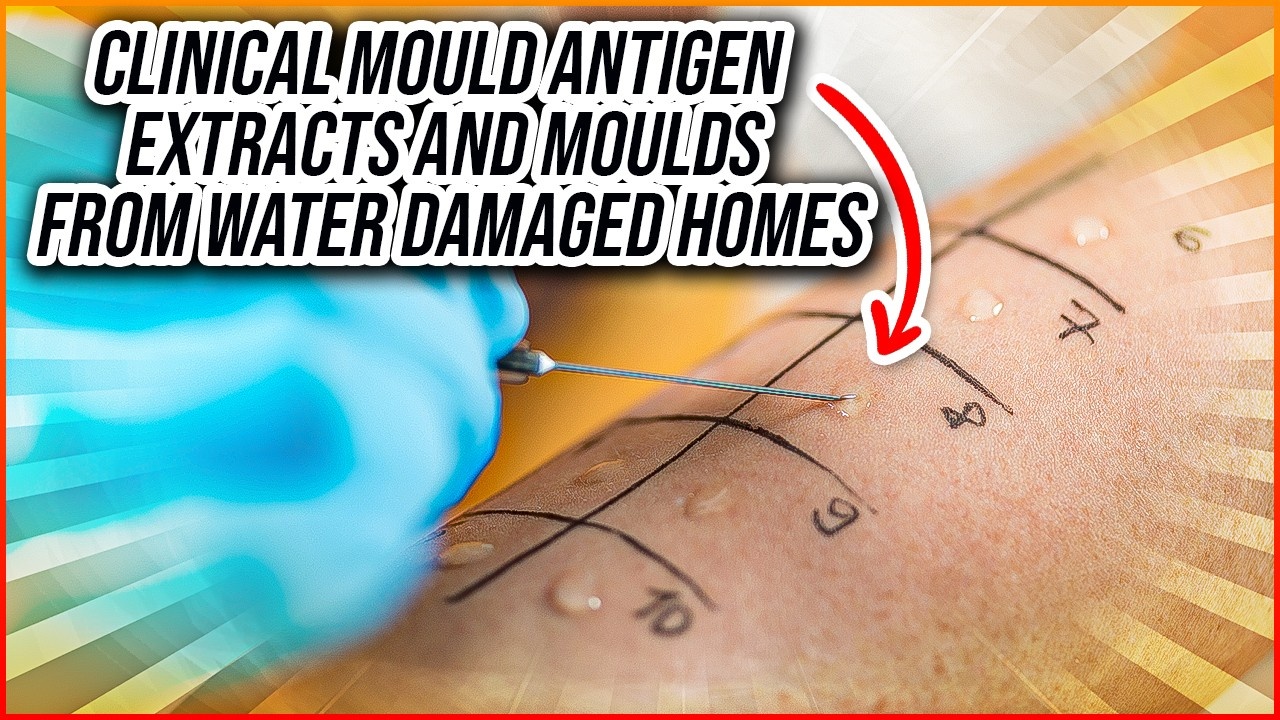
Hi there. Welcome to the Mould Show. My name's Dr. Cameron Jones, and I'm an environmental microbiologist and public health scientist. Now today on this show, I'm going to be reviewing a recent paper that just came out, which is showing you how you can determine categorically that you are in fact hypersensitive to mould. Now, all of us are concerned about indoor air quality and the potential impact of mould on our health.
For many of my clients, they go to see their doctor or healthcare provider, and they're looking for some way to validate their symptoms and to connect the house or their working environment with some sort of medical information that validates their adverse health symptoms. And there's a really interesting problem. And hypersensitivity and allergy, are the first things that you think about when you think about being exposed to something in your airspace or a bio-aerosol.
So what we're going to be focusing on today is clinical mould antigen extracts, and moulds from water-damaged homes. Well, what do I mean by this? Well, to put this into perspective, we're going to have to go through some of the top reasons why anyone would be interested in measuring mould inside their home, because why? Why would you do it? Well, we're going to go through the key reasons here. So the top five reasons for indoor air quality and mould sampling specifically, the number one reason is health concerns.
The second reason why you would undertake an indoor air quality assessment is if you have visible mould and especially if you are a renter or a tenant, you don't need to be living in mould and damp affected dwellings. And if you have a new home, for example, or even if you've lived in your home for many years or decades, if you see visible mould on walls, floors, the ceilings, that is potentially going to impact on your health and amenity and quality of life. Obviously known problems, water damage and dampness, is one of the other reasons why you would consider an indoor air quality and mould inspection.
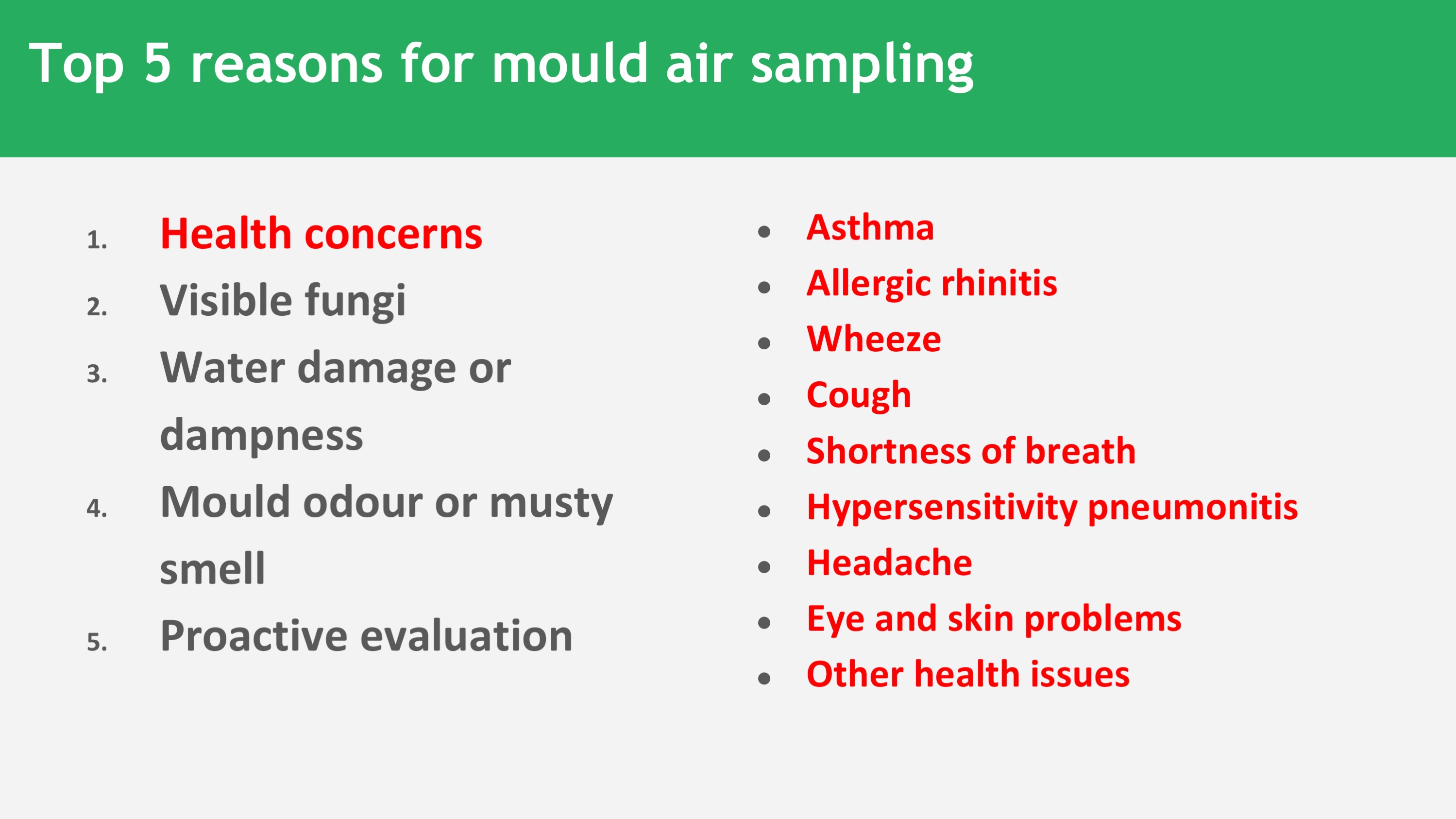
Of course, if you can smell mould, well that is a number one reason for getting your home tested. And then there is a fifth reason, which is something called proactive evaluation. And proactive evaluation, for example, could be regular monitoring for indoor air quality. For example, in a school, certainly here in Australia with COVID 19, I'm getting a lot of calls from schools that want to undertake indoor air quality assessments to establish a baseline for their classrooms.
Similarly, if you are considering the purchase of a new home, a proactive evaluation to not only look for underlying building defects using the services of a building inspector, but you need to look for water damage and mould as well. And the reasons for this, the key and top list of symptoms that are very strongly linked in the research literature with exposure to mould include asthma, allergic rhinitis, wheeze, cough, shortness of breath, hypersensitivity, pneumonitis, headache, eye and skin problems, and other health issues.
Now, if we consider all of that, because all of these are really strong criteria for this, I certainly want to give you a deep dive and a simple overview of what we're talking about when we are considering indoor air quality and how we go about measuring this. And what I've done is I've just gone next door to my air biology lab. And I am going to show you what a typical Petri plate with outdoor air looks like.
Now, this is sampled using a bio pump. And basically that takes a known volume of air, so you can standardize your samples, or we can use these in settle plate mode as well. But for the purpose of this live stream, I just want to show you what outdoor air looks like. And these were samples that we've collected and that's the outdoor air, that's control.
And this is one of the complaint rooms. It's a bedroom, and you can see that only one colony's grown. That's a really good result for that particular property, but you can also get serious issues. And why I'm showing this to you is I just wanted to highlight the fact that it's really easy to measure your indoor air quality, and you can also use something called spore traps.
Spore traps aren't looking for the viability of microorganisms, just really their presence or absence, and why I wanted to show this to you and show this to you now is that it's going to become very important when you consider the information that I'm going to present in a few minutes now, because there has been some ground breaking research just published last week, and they have been looking at how you go about, with your doctor, determining whether or not you have an allergy. And I meet so many clients who go to their healthcare practitioner for these types of allergy tests.
Sometimes they get results that really don't inform the clinician. And they say, "Look, I know that there's something going wrong in my house. I've got all these symptoms and yet the allergy test came back fine." I want to put this in perspective because this ground breaking paper shows that there needs to be some serious improvements to allergy testing, and that's probably just about to happen.
So I'm going to dig into exactly what this publication has to say and how you can take advantage of some of the information right now, certainly if you are interpreting indoor air quality assessments based upon either spore trap testing or viable airspace testing. So what this paper was looking at is something called allergic sensitization. And that's determined in vivo, that's inside your body, by a skin prick test using individual or mixes of fungal antigen extracts.
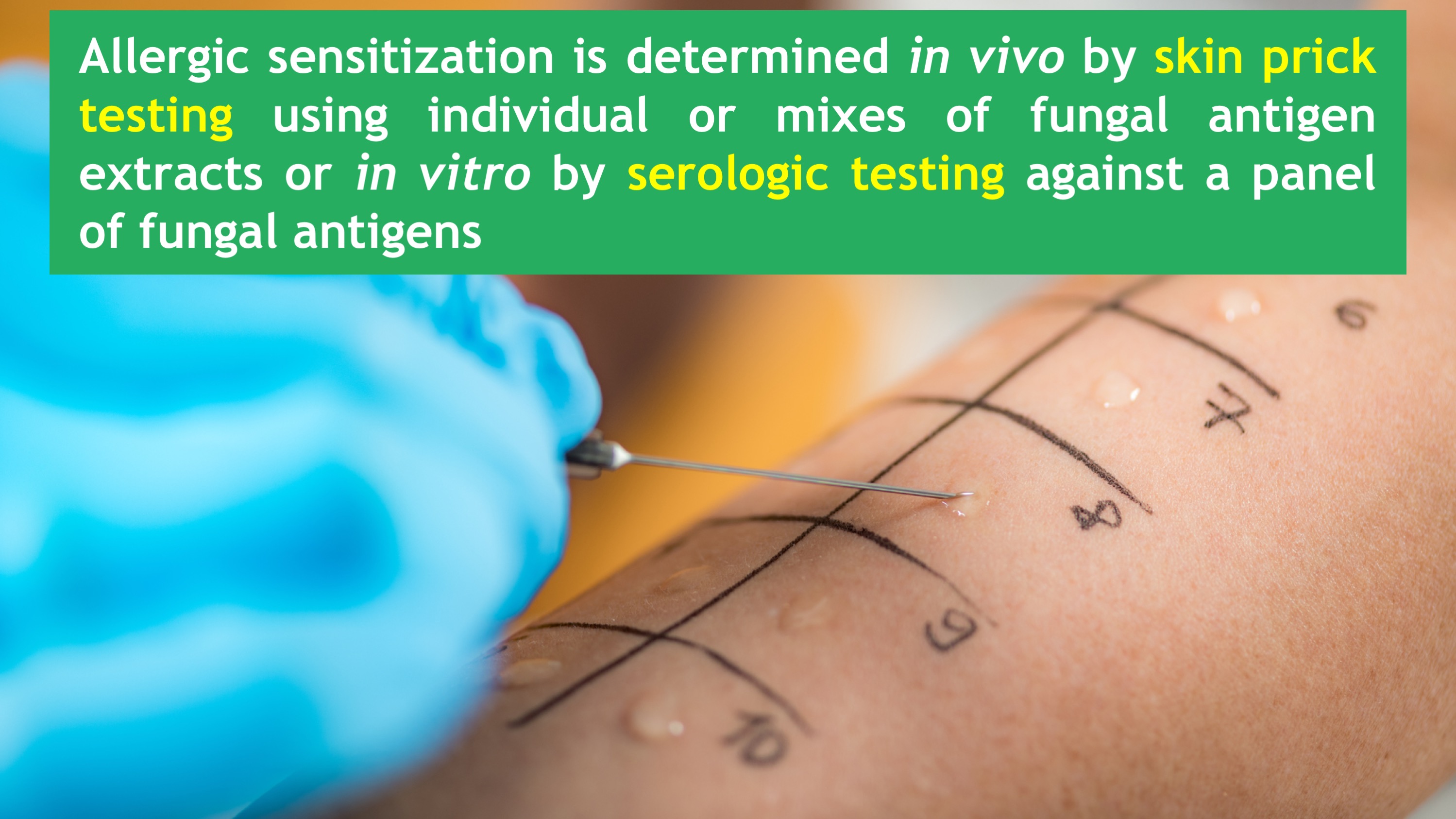
Now you can imagine there are labs worldwide that are allowed to make specific antigens to specific types of mould and then test your skin to see whether or not you have an allergic reaction, because that means that that is a very clear determination that you are in fact susceptible to these types of moulds. The other type of serological test is an in vitro method, and that also tests your sera against a panel of fungal allergens.
So what does this landmark publication have to say? And again, it's going to be all in the show notes. So the links are going to be here, but this paper came out by the American Thoracic Society on November 17, and what they were looking at is that this research reviewed approx. 25,000 indoor air quality samples from approx. seven and a half thousand complaint homes. And they compared them to approx. 30,000 outdoor air samples.

This really is ground breaking research, because it is statistically relevant, looking at that number of homes over a long period of time, by one of the best labs in the United States. And so they were looking at using Petri plates and spore traps. And this is really important, because often I'm asked the question, how do we compare and contrast the different data obtained by viable testing or sport trap testing? And look, it's pretty easy. Labs like ours can easily do that for you.
This publication is explaining the connection between viable testing and what is called viable and non-viable testing with spore traps. Now again, I want to move on to what this data actually says. One of the problems from the clinician's viewpoint, that is the doctors who patients and clients of mine are seeing, is that there is an absence of standardized fungal extracts.
This can result in misdiagnosis of mould related disease, and that it's an absolute disaster, because no one wants there to be a misdiagnosis, ever. And you wouldn't want that, especially if you've got concerns about the safety of your home and you get these types of tests done. It would be really good to make sure that when you go to your doctor, that the doctor is capable of doing an allergy test that is going to reveal something useful. And what this publication is saying is that the available allergy antigens aren't that good and that they need to be improved.
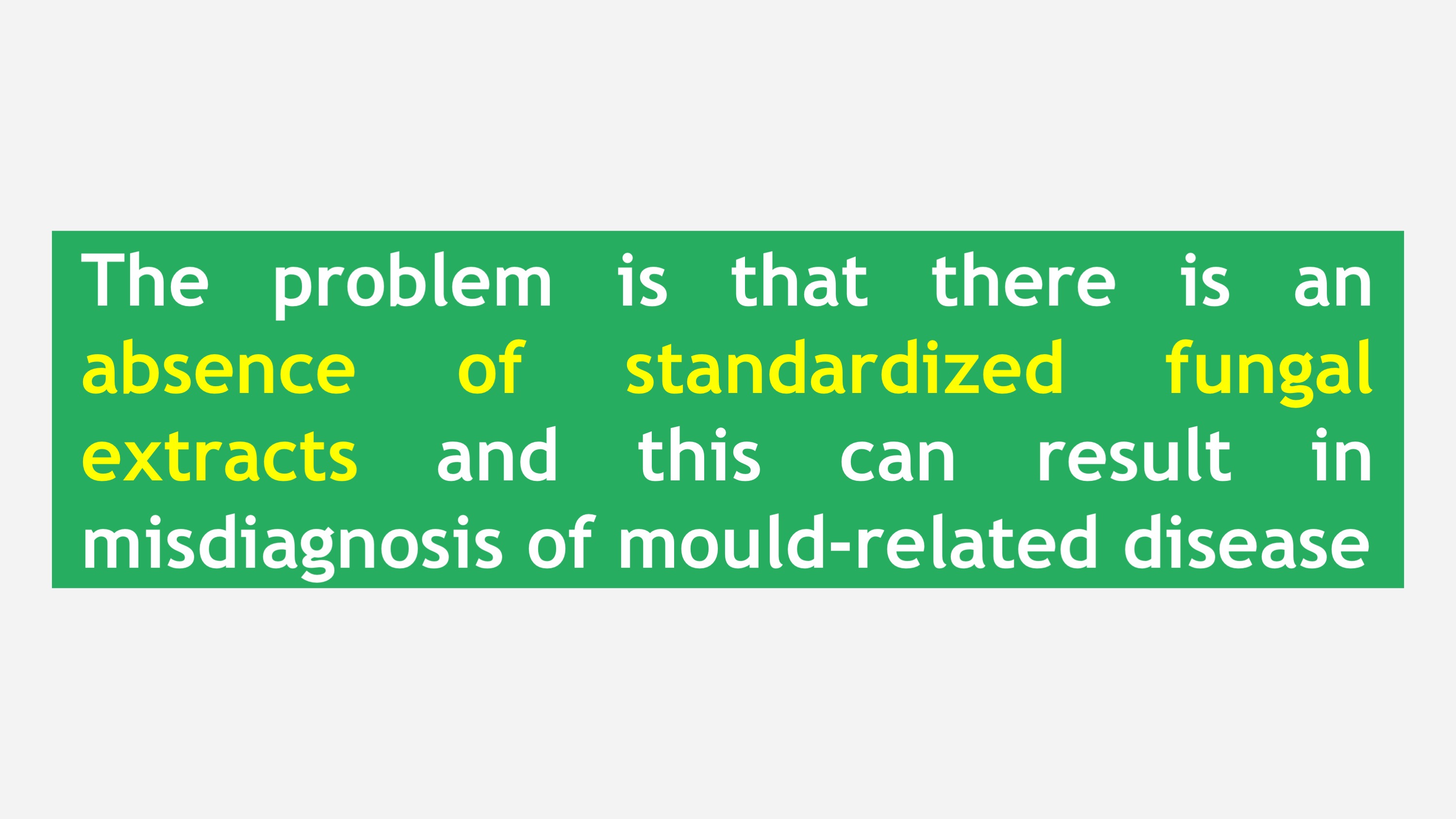
This research is showing exactly what fungi are most dominant in complaint homes, not just water-damaged homes, but homes that have a complaint. That means that there are people in there who are suffering, have some of those health symptoms that I showed you on the first slide. And so what are the dominant indoor fungal species? Well, Aspergillus versicolor, Aspergillus sydowii, Aspergillus niger. I can show you Petri plate and spore trap, thousands of them that we've done, where Aspergillus versicolor or Aspergillus niger appear dominant on viable culture or on microscope slides from spore traps.
If we move to Penicillium, Penicillium brevicompactum, I see so much of this particular Penicillium fungus growing in live culture, same with Penicillium citreum. Some of these microorganisms are quite beautiful on the Petri plate, but look, if you're allergic, you're not interested in whether they're pretty or not. You just know that you are not feeling well.
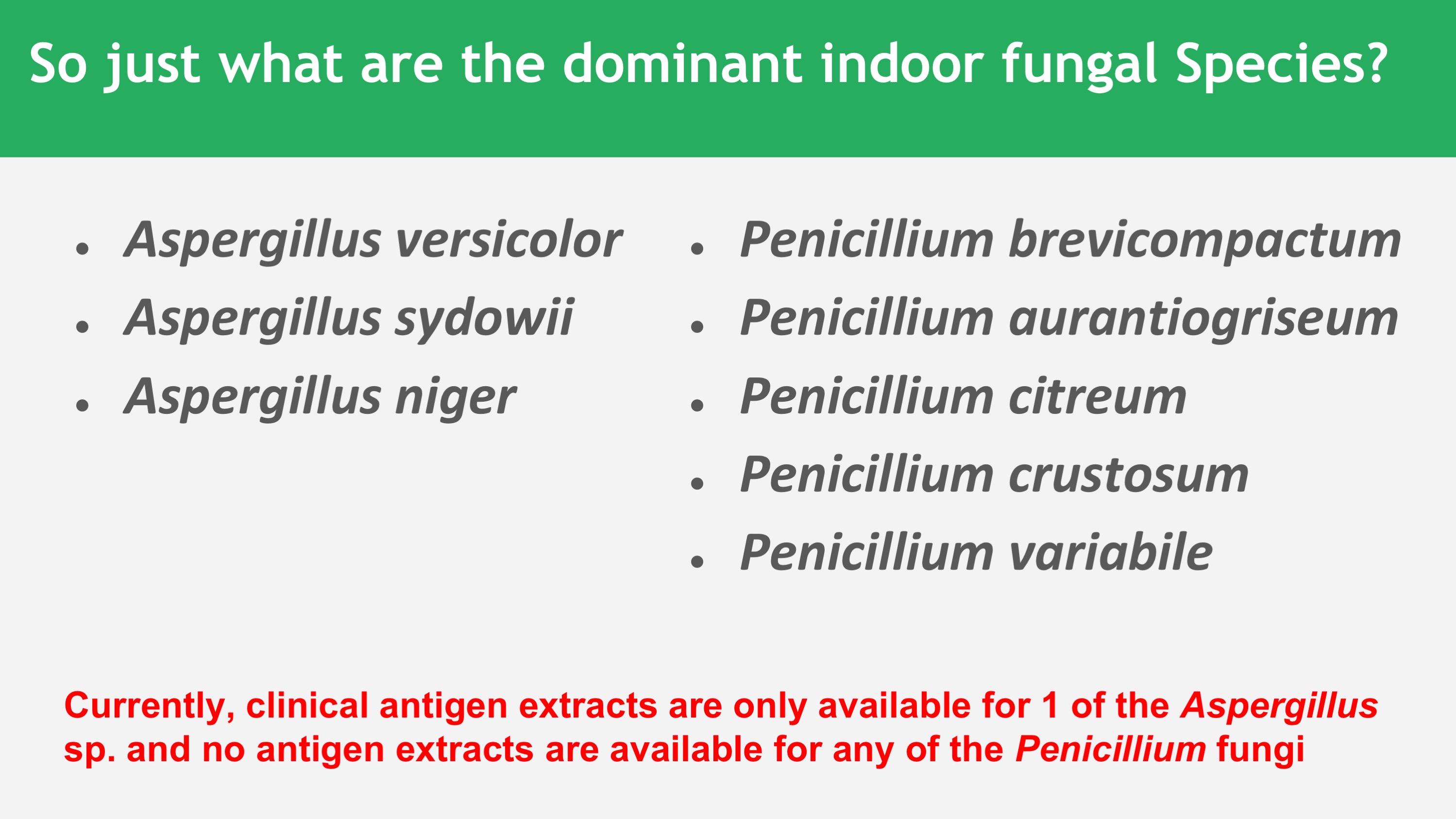
So this key list that this publication is revealing is going a long way towards improving the antigens that are planned to be available for clinicians to do better testing of your allergy response. Because currently, the clinical antigen extracts are only available for one of these Aspergillus species and no antigen extracts are available for any of the Penicillium fungi. Now that's not good news, is it?
Because if you do go to the trouble and expense of conducting an indoor air quality assessment to firstly determine whether or not your indoor:outdoor ratio is okay or not, you want to do something with that data. And obviously, usually the main benefit of doing an indoor air quality assessment is to use that information to guide any remediation effort because remediation or removal of the mould triggering source is the best thing you can do for your home health and wellness, and also to reduce the likelihood of having an allergic reaction.
But let's now get to the conclusions, because this paper went further than just encouraging the existing labs that make the antigen extracts to increase the types of antigens made available to clinicians. They also had a lot to say about the numbers, the raw data, that is what you can expect to see when you do viable airspace testing or spore trap testing. So they said that. What else do they know?
According to the American Industrial Hygiene Association, and that's a well-established group in the United States, that based on air sampling to either Petri plates or spore traps, whenever there is a significantly higher indoor versus outdoor fungal count, then the room or area should be considered unhealthy. Now let that sink in. Whenever the indoor levels of mould are higher than the outdoor levels, you have to consider that there is a problem.
This makes it fundamentally important that all indoor air quality surveys should use at least two outdoor controls, preferably from the front and the rear of the property, to get some sort of statistical measure of the average and then the variance about the mean, or the average, because that's really important. Because if you are comparing outdoor to indoor ratio, well, that's just good plain science to collect adequate controls, but what else did they say?
This is just fantastic, so I want to emphasize this very highly, that if you drill into the data and especially for the spore trap data, you will find a line in the lab report, which shows the combination of Aspergillus and Penicillium. You should also have at least one column or sample for the outdoor controls. And when you look at that, a new minimum risk level threshold has been introduced on November 17th in this publication, by the American Thoracic Society.
They state that where the combined concentration of Penicillium/ Aspergillus in the indoor air, is more than 200 colony forming units per cubic meter, higher than the outdoor air, this should be considered the new evidence-based benchmark for allergic sensitization. So look at your data in your lab reports. Look for the information for Aspergillus and Penicillium.
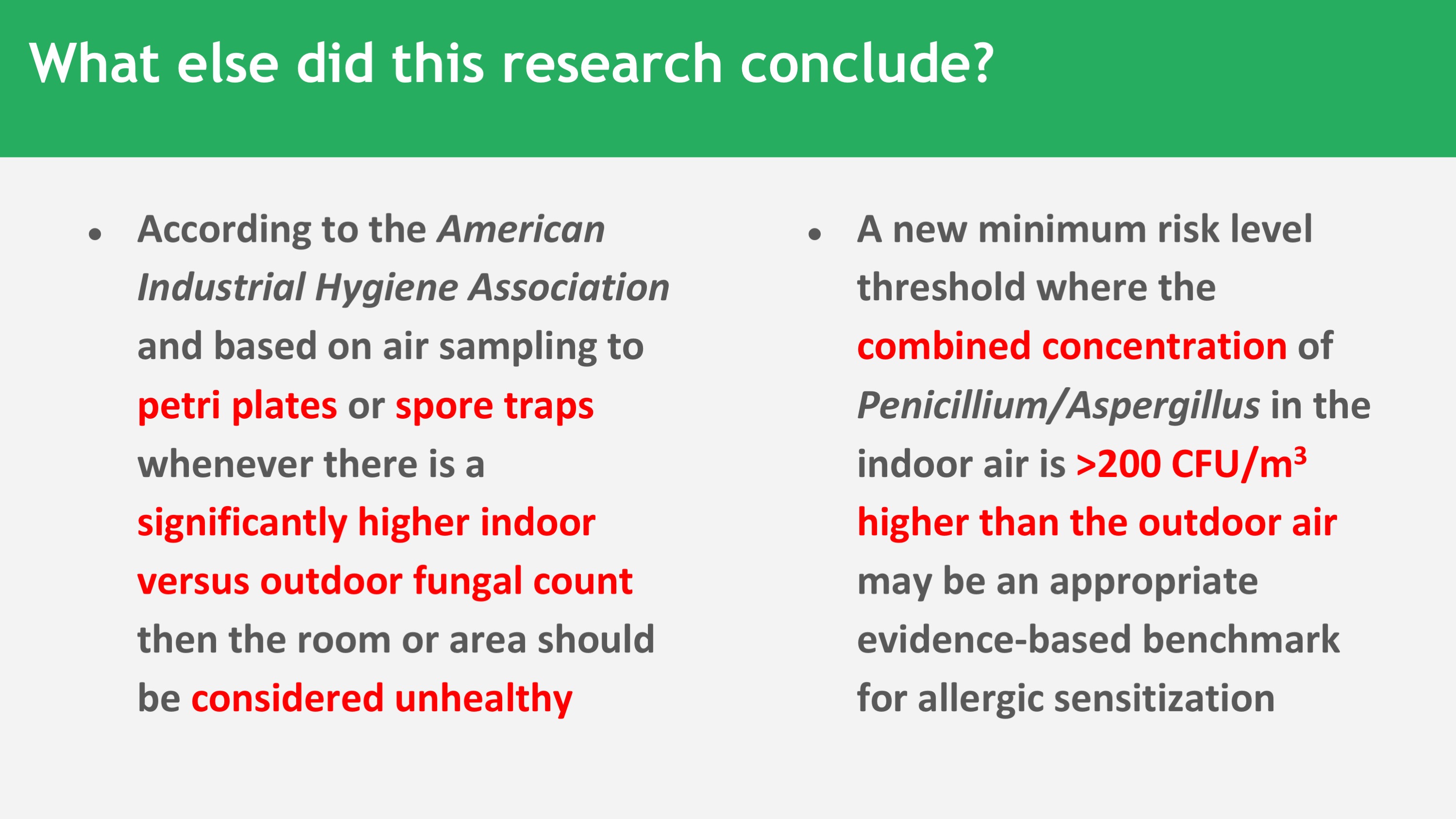
Recognize that that's just to genus level, that there are specific new species that antigen extracts aren't available. So your doctor may not have been capable of doing a suitable allergy test on you. It doesn't mean if you haven't had an allergic reaction to the existing skin prick test that you are not allergic. It just means that maybe the antigen wasn't as well matched to the types of mould found in complaint homes.
In any case, what I want to say now is this live stream will be available on a podcast and on iTunes. If you are interested in finding out more about the services that we offer, certainly we do viable testing for mould, spore trap testing for mould, and can analyze your research reports or reports authored by other indoor air quality professionals and labs to provide expert services for any matters that you are concerned about.
My name's Dr. Cameron Jones. I think this publication that's just come out, you really need to download it yourself. It will be available, as I said, on the links in the description. It's really important that this type of work is undertaken and published because it says a lot about confirming the link between human exposure to mould in the air space and how you go about validating that you are in fact sensitive to it and that the symptoms that you might be experiencing are definitely linked to the environment.
While we wait for new antigens to be rolled out to the doctors throughout the world, remember that another key takeaway from this publication was saying that look at the Aspergillus/Penicillium levels between outdoors and indoors, and for that specific band, if they show >200 colony-forming units or more indoors in that band of spore types versus the outdoors, you probably have a problem.
Have a great week, stay safe. Bye for now. Bye.
REFERENCE:
Misalignment between Clinical Mold Antigen Extracts and Airborne Molds Found in Water-Damaged Homes. William M Sothern, Sarah L O'Beirne, Michael Berg, Daniel Devine, Nasrin Khandaker, Christopher Mikrut, and Robert J Kaner. Published online: November 17, 2021as DOI: https://doi.org/10.1513/AnnalsATS.202101-096OC

